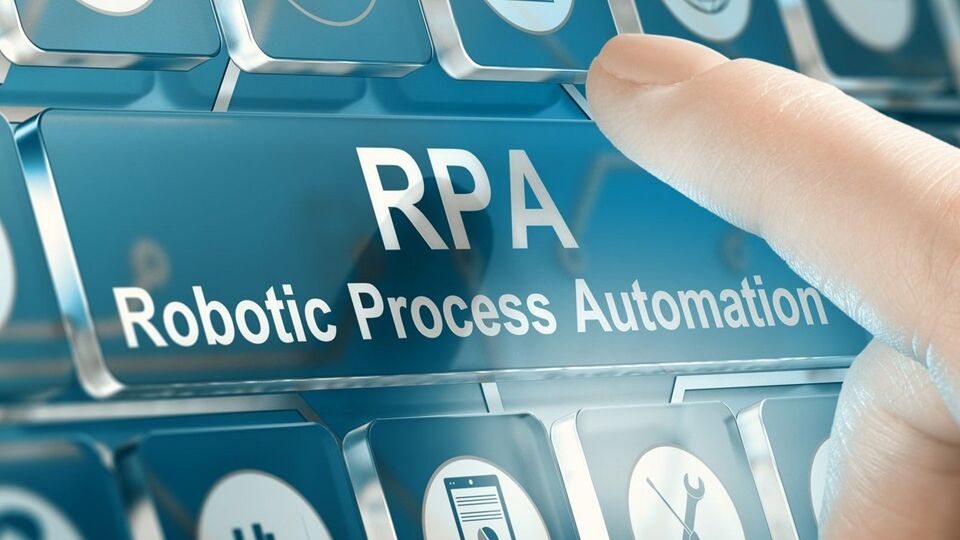
Robotic Process Automation, or RPA, has recently become a revolutionary technology. It revolutionized the way that organizations perform routine, rule-based tasks. RPA automates repetitive processes using software robots (or “bots”). This allows employees to focus their energies on more creative and strategic endeavors. RPA’s significance lies in its ability to improve operational efficiency, reduce mistakes, and streamline workflows for various industries.
Resilient and scalable automation architectures are paramount as organizations embrace RPA to optimize their business processes. Scalability is the ability of automation tools to adapt seamlessly to changing workloads and business requirements. The system must be resilient to ensure that it can withstand interruptions and recover gracefully after failures. This will allow for uninterrupted and reliable automation testing.
This article explores the key principles and strategies for designing a resilient and scalable RPA architecture. It sheds light on how these attributes are crucial to realizing the full benefits of Robotic Process Automaton.
All You Should Know About Scalability In RPA
In the context of Robotics Process Automation (RPA), scalability is an important aspect that addresses the ability of an automation solution to accommodate increasing workloads and changing business requirements. Scalable architecture is essential as organizations use RPA to automate many processes.
Scalability is the ability of an RPA system to handle more transactions, tasks, or processes without compromising its performance. Scalability is the ability to add and remove automation resources in accordance with the business’s growth.
Scalability is more than just handling higher volumes. It’s about optimizing resource usage, maintaining responsiveness, and supporting flexibility to adapt to dynamic operational environments.
Key Principles For Designing A Scalable & Resilient RPA Architecture
To design a robust and scalable Robotic Process Automation (RPA) Architecture, it is important to adhere to key principles that ensure the durability and effectiveness of automated processes.
1. Modularity & Componentization
Componentization and modularity are fundamental principles for designing a robust and scalable Robotic Process Automation architecture. Modularity is the process of breaking complex automation processes down into smaller, self-contained modules or components. Each module addresses a particular task or function, which promotes reusability within the automation system. This allows independent development, testing, and maintenance of modules. It streamlines the management of RPA.
Componentization involves structuring modular components to facilitate easy assembly and integration. Components are built to perform particular functions and can be building blocks for more complex automation workflows. It increases the RPA system’s scalability by making adding or removing specific components easier and more resilient. The rest of the RPA system can function even if a certain module has issues. This reduces the impact of any potential failures.
Modularity and componentization are essential for scaling RPA solutions while maintaining robustness and adaptability to changing business needs. This approach creates an automation ecosystem that is more resilient and manageable, ultimately contributing to the success of RPA.
2. Distributed Processing & Parallel Execution
Parallel execution and distributed processing are key principles for designing an RPA architecture that is scalable and resilient. Distributed processing is the decentralization and distribution of computation tasks among multiple processing units such as servers or virtual machines.
This principle is used in RPA to optimize resources by allowing automation workflows to run simultaneously on different processing units. Parallel execution is an integral part of distributed processing. It involves the simultaneous performance of multiple tasks. This increases the processing speed of automation processes.
Scalability is a key factor for organizations since they can handle an increased workload by scaling up their infrastructure horizontally. RPA can handle a growing number of transactions and processes by distributing tasks over multiple processing units. These principles also contribute to the resilience and robustness of the architecture. When one processing unit fails or has issues, other units can take over the processing, minimizing downtime and maintaining continuity.
Distributed processing and parallel execution improve scalability through resource optimization and allow the construction of resilient RPA architectures capable of handling dynamic workloads with consistent performance and reliability.
3. Scalable Infrastructure & Resource Management
A scalable infrastructure and an efficient resource management system are crucial in designing a robust and scalable automation architecture for Robotic Process Automation. Scalability is important to ensure that an automation solution can adapt seamlessly to changing workloads and meet the growing demands of business processes.
To implement a robust infrastructure, you need the right hardware, software, and cloud-based services to handle the increasing volume of automated tasks. Resource management also involves optimizing computing resources such as servers and processors to ensure performance and responsiveness. By implementing resource management practices and planning for scalability, organizations can create a resilient RPA infrastructure that can meet evolving business requirements while maintaining reliability.
4. Error Handling & Exception Management
Handling errors and managing exceptions are crucial in designing a robust and scalable architecture for Robotic Process Automation. Due to the dynamic nature of business processes, unexpected errors and exceptions are inevitable. To ensure that automated workflows continue, it is important to have a strategy for handling errors. Implementing robust error detection mechanisms, logging procedures, and notification systems will help identify and resolve issues quickly.
The architecture should also include exception management protocols that gracefully handle unexpected scenarios. This allows the automation system the ability to recover from unforeseen situations or initiate predefined resolution procedures. An integrated approach to handling errors improves the reliability of RPA but also helps with better troubleshooting and traceability. This allows for efficient maintenance and continuous improvements of the automation framework.
5. Data Management & Security Considerations
When designing a scalable and resilient automation architecture for Robotic Process Automation, it’s important to have a robust data management system and take security measures. To ensure compliance and minimize risks, the handling and storage of data must comply with industry standards and regulations.
To implement a structured data management strategy, it is necessary to define data sources, establish data flows, and incorporate data cleansing and validation mechanisms. It is important to consider security to protect sensitive data processed by automated workflows. To protect against unauthorized access and possible breaches, encryption, access controls, and regular audits must be part of the architecture. Data management and security that is proactive not only strengthens the RPA system but also builds trust with stakeholders. This allows for seamless integration of automation in critical business processes.
6. Monitoring & Analytics
Monitoring and analytics are the foundation of an automated architecture that is robust. They provide essential insights about the performance, efficiency, and health of RPA systems.
Monitoring is effective when it involves tracking automated processes in real-time, as well as resource usage and error rates. This allows organizations to identify deviations in behavior and facilitates quick responses. Analytics plays a vital role in extracting meaningful trends and patterns from the data generated through automated workflows. Analytics tools can provide valuable insights about system behavior, user interaction, and opportunities for process optimization.
By establishing key performance indicators (KPIs), organizations can measure the effectiveness of their automation initiatives and aid in continuous improvement. Monitoring and analytics work together to ensure reliability in automation architectures and empower organizations to make data-driven decisions, optimize processes, and improve overall operational efficiency.
7. Documentation & Training
Documentation and Training are key pillars for the successful implementation and upkeep of an automation architecture that is scalable and resilient. A comprehensive documentation is a reference guide that explains an automation system’s design, components, and functionality. The documentation is invaluable in troubleshooting, system upgrades, and knowledge transfer.
Training the RPA team is also crucial, ensuring they have the skills to operate and maintain automated processes. Training programs should include best practices, security protocols, and maintenance procedures to foster a skilled workforce that can adapt to changing automation requirements.
A culture of continuous improvement is further supported by establishing a culture of learning. This helps the organization maximize its RPA architecture’s potential while ensuring an informed and seamless integration into everyday operations.
Wrapping Up
Designing a robust and scalable automation architecture for Robotic Process Automation is a multifaceted task that requires careful consideration of many factors, including scalability and resource management.
Other important aspects include data management, security, and modularity. Integrating automation testing tools like LambdaTest can ensure the reliability and efficiency of automated processes. Automation testing is used to verify the accuracy of workflows, identify potential vulnerabilities, and improve the overall robustness. Combining a strategic approach in architecture design with an ongoing commitment to testing and refinement can help organizations harness the full RPA potential, achieving operational efficiencies, scalability, and resilience within a constantly changing business environment.

